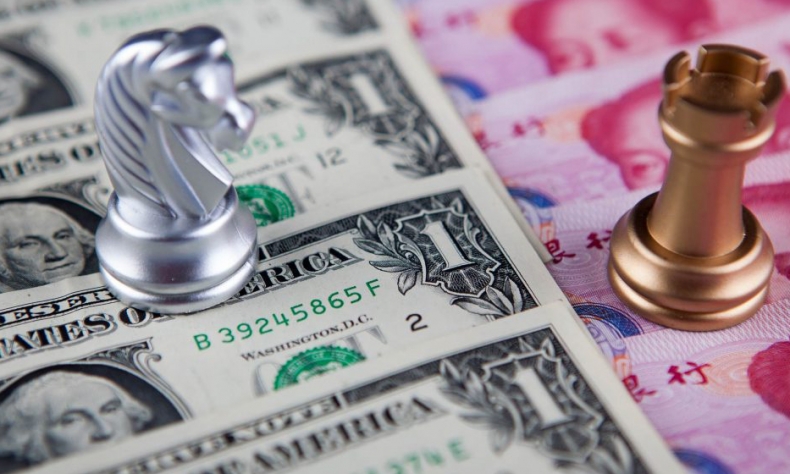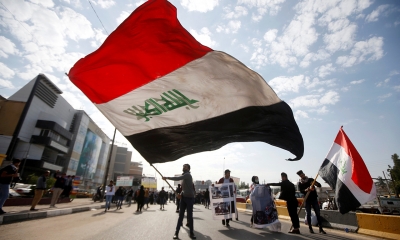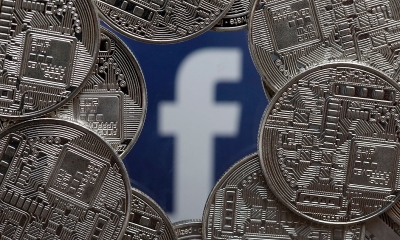The Decline of the Dollar and a Revolutionary Renminbi

Decline seems to be inevitable for us mortal beings and nearly everything that we are a part of. Empire and global hegemony, as we now know, are no exceptions.
A Modern Tale of Empires
Decline seems to be inevitable for us mortal beings and nearly everything that we are a part of. Empire and global hegemony, as we now know, are no exceptions. Throughout our history, particularly over the last century, one could argue that certain periods and events can be marked as turning points that have subsequently gone on to set off a decline in a nation’s global influence in political, economic and military terms. Changes over the last century highlight this well – the Suez crisis between Egypt, the USA and the UK in 1956 that served as the final nail in the coffin for Britain and its waning imperial ambitions; the Yom Kippur War in 1973 and how the global oil embargo which was levied in response to it set the stage for a long term decline in US industry and manufacturing; or that fateful day on September 11th, 2001, when three of four hijacked planes crashed into the twin towers of the World Trade Center in New York City and the Pentagon of Washington D.C, in an attack which would result in the loss of over 3,000 lives, a major shift in US foreign policy, and the expansion of a bloated and overstretched military empire.
It is generally agreed that these events were shortly followed by a decline in the primarily affected country’s geopolitical wield and status. Something else that these events share in common, if you haven’t yet noticed it, is a common party, in the form of a region comprising desert, and mostly oil-rich countries.
We are of course, talking about the Middle East. For the sake of oil, general lack of stability and countless other reasons, different nations of the Middle East and the region overall seem to act as kryptonite to the might and upkeep of empire. The consequences of conflict with this part of the world can be massive, with the potential to spill over into other parts of a conflicting nation’s domestic and foreign policy. Alas, it is here where we finally find ourselves delving into the Five Ws of this article’s . And it all started with the US withdrawal from the Iran Nuclear Deal.
What is officially known as the 2015 Joint Comprehensive Plan of Action (JCPOA), commonly referred to as the Iran Nuclear Deal, is argued by many as one of the most important accomplishments of the Obama Presidency, and perhaps even for US foreign policy in recent memory. The JCPOA itself was a multilateral agreement between Iran, the USA, the European Union, China and a number of other countries, which required Iran to reduce its nuclear capabilities in respect to developing nuclear arms, in return for the lifting of economic sanctions imposed on Iran by all of the agreement’s signatories.
However, the current Trump Administration, in spite of the overwhelming evidence out there underpinning the merits of the agreement, and for reasons which are still yet to be fully explained, recently announced the US withdrawal from the agreement. Thus, it is with this move that history will come to assess this decision as the moment where America’s deteriorating grip on global affairs took another big, far-reaching hit, much to the benefit of some relatively small global players in Saudi Arabia and Israel. But more importantly, the act has the potential to serve as an unexpected boon to China.
The Power of the Dollar?
The seeds of long-term decline for US hegemony found in its decision to withdraw from the Iran Nuclear Deal, interestingly, lie in its obscurity to the average person on the street, and therein rests the perniciousness of its effect. Decline for America on the world stage as a consequence of pulling out of this deal will come not as a result of Iran – now no longer tethered to the agreement in the same way – possibly developing its nuclear arsenal. Nor from the loss of moral standing that is bound to follow this move for the US across the world. Nor even because of its growing rift with the rest of Europe – and particularly Germany – over trade and foreign policy matters, which has widened as a result of this move. It will come because dropping this deal has the potential to lend more credence and influence to China and the renminbi across the globe.
America’s geographical fortunes, its unrivalled scope of soft power, and of course, the expansive, frighteningly large presence of its military which can be seen far and wide across the air, oceans and lands of the world in its military and naval bases all play important roles in establishing US global power and influence. Nevertheless, one must not underestimate the question of the U.S. dollar in a global context and the part it also plays in all of this.
Generally speaking, the U.S. dollar is held as the world’s de facto reserve currency. According to The Balance, 64 percent of all known central bank foreign exchange reserves are dollar-denominated, while over 85 percent of global forex trading is done through means of the U.S. dollar. Not to mention that 39 percent of the world’s debt is issued in dollars. Many other elements of world trade, such as commodities trading and trade in general, are also conducted via the U.S. dollar. What started with the 1944 Bretton Woods Agreement has arguably helped in kick starting and maintaining an empire unlike any other before it, where influence is exerted through more indirect, imperialistic means than the typical, direct colonial activities associated with past empires.
The primacy of the dollar is a crucial tool in protecting the interests of worldwide US hegemony for a number of reasons. Indeed, being world’s reserve currency means that there is always demand for dollars throughout the world. As the global economy expands and nations continue to trade with each other, there will always be a need for countries to buy dollars as the lion’s share of their international trade and day to day borrowing will be conducted in this currency. The US dollar is the reserve currency and is likely to remain so. This geopolitical reality enables the US economy to rack up its debts with relative impunity.
This is particularly evident in the ever-expanding US military (another important element of maintaining US hegemony), which currently ranks as the largest in terms of spending, outdoing the combined military budgets of the next seven biggest contenders. Much of that spending is funded by borrowing, mostly in the form of treasury bonds issued in its own currency, picked up by institutional lenders holding a shared confidence in the US ability to repay them, in part, as a result of the aforementioned factors. And even in the case where the US decides to pay for things by increasing the money supply through printing more money (technically known as quantitative easing), constant demand for dollars across the world helps to ease downward pressure in the form of significant currency depreciation, a consequence which would likely plague and possibly even bankrupt most other countries if they were to consider a similar approach.
The fact that the US dollar is the global currency essentially means that it is a lot easier for America to expand both economically and militarily when compared with other nations. In this way, it arguably lies at the heart of its influence and dominance on the international scene. Nevertheless, glimmers of change shine from the direction of a rising world power in China.
A Date with the Chinese Yuan
In March 2009, China, along with Russia, made calls for a new global currency. As the Chinese economy continues to grow in size and global prominence, China is more likely to find itself in situations where its economic and political interests clash with those of the USA and other major nations. And a good way for China to gain leverage in these scenarios and reduce risk is by effectively raising the profile of its own currency and the importance it holds in world trade and financial transactions. If the renminbi were to ever find itself exercising the status of that of a global currency, other benefits would include the ability to price more international contracts in Chinese yuan, which would in turn eliminate the risks associated with currency fluctuations, as well as reduce borrowing costs in respect to interest rates for Chinese government-issued bonds and Chinese exporters.
The goal of having your currency assigned the status of a – or even the – major world reserve currency is a lofty one, but clearly comes with a number of immeasurable benefits. China recognizes this, and is working hard to make it happen. For instance, as a result of China implementing a number of measures targeted towards financial reform, the International Monetary Fund awarded the Chinese yuan status as a reserve currency in late 2015, and then, one year later, went on to add the currency to its Special Drawing Rights basket, one which previously included only the euro, the Japanese yen, the British pound and the US dollar. There is also the implementation of the Belt & Road Initiative, which allows China to export its currency to other countries in the form of loans. In response to these changes, the yuan has become a lot more prominent as a global currency over the last few years, aptly illustrated by the fact that in August 2015 it became the fourth most-used currency around the world.
Iran and The Chinese Yuan
Now that America has withdrawn from the Iran Nuclear Deal, rumours abound about the development of what is known as the petro-yuan: oil that is traded in Chinese yuan. Many commentators suggest this is likely for Iran because, now isolated from doing business with the USA and possibly Europe, the nation may now have to consider the idea of having its oil purchases from the world’s largest importer of crude oil in China, priced in yuan. The markets are also increasingly beginning to act on this suspicion – according to RT Business, the percentage of yuan priced crude oil contracts has increased to 12 percent of global trading since the US announced its withdrawal from the Iran Nuclear Deal. This figure represents a significant upward trend when compared to its initial eight percent figure in March 2018, when these contracts were launched under the Shanghai International Energy Exchange.
Thus if Iran, a comparatively large producer in the crude oil market, were to agree to have its oil exports to China priced in yuan, it could end up triggering a similar move on the part of other major oil trading countries such as Venezuela, Russia and possibly even Saudi Arabia. This would mean that the petro-dollar would see a challenge to its leading position unlike anything else witnessed in its near 50-year history, as China continues to chip away at the importance and spread of the U.S. dollar as the world reserve currency.
Albeit, it is important to understand that a future where the yuan is able to yield a significant challenge to the dollar’s international clout, and subsequently that of overall US hegemony, is still far from guaranteed. Even if it were to happen, the change itself would be very gradual and not something that any of us will see within the next decade at least. Nonetheless, years from now, America’s obsessive desire to further its position of influence in the Middle East, as recently demonstrated by its withdrawal from the Iran Nuclear Deal, could be seen as one of the last straws which broke the camel’s back in relation to America’s reign as the world superpower, and a hefty one at that.
Timothy Lobban BA (Cantab), Lead Editor at forpotus.com who previously copy edited for china.org.cn
Editor: Zheng Nan
The article represents the author’s personal opinion which does not represent the China Focus’ stance.
 Facebook
Facebook
 Twitter
Twitter
 Linkedin
Linkedin
 Google +
Google +







